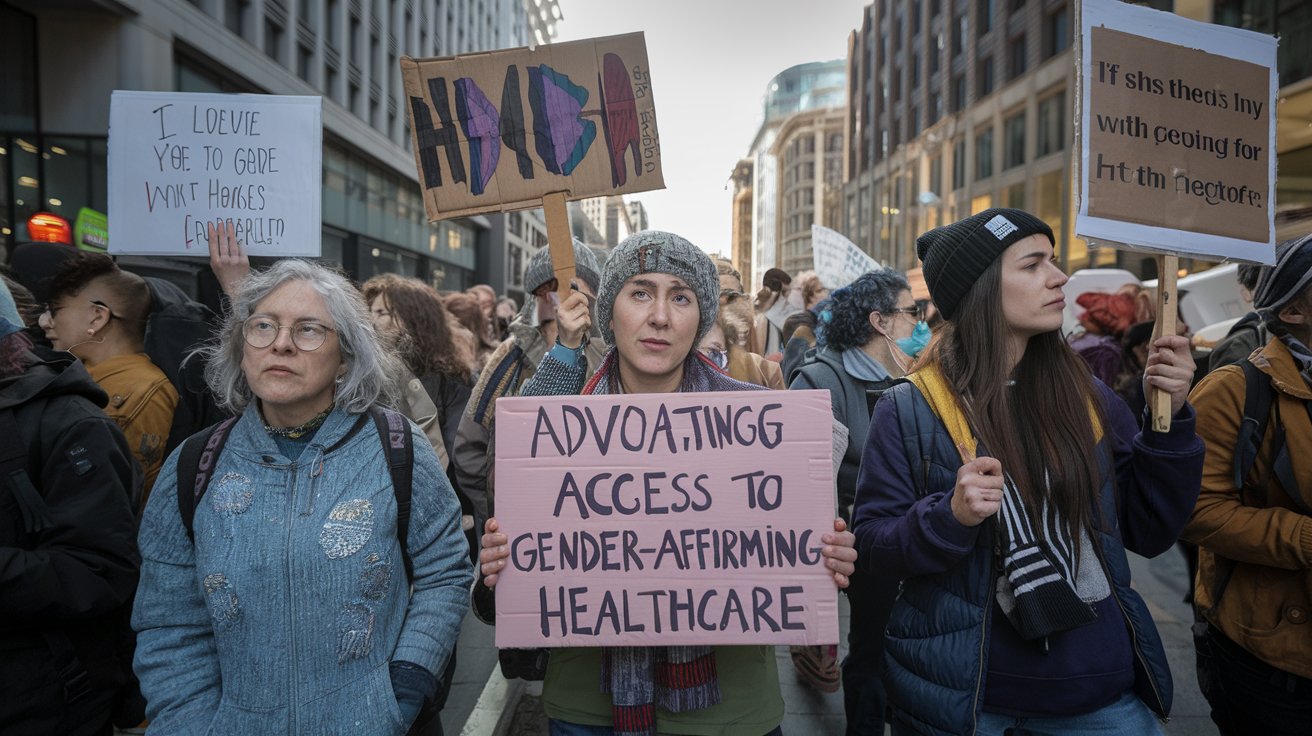Trump’s Executive Order Targets Gender-Affirming Care for Minors: What It Means for the Future of Transgender Rights in the USA
President Donald Trump has signed a groundbreaking executive order aimed at restricting gender-affirming care for minors, intensifying the ongoing debate over transgender healthcare in the United States. The order directs federal agencies to halt funding for medical procedures related to gender transitions for individuals under 19, impacting access to puberty blockers, hormone therapy, and gender-affirming surgeries.
This policy shift has sparked immediate backlash from LGBTQ+ advocacy groups, medical professionals, and civil rights organizations, who argue that it undermines the rights of transgender youth. At the same time, conservative lawmakers have praised the decision, claiming it protects minors from irreversible medical treatments.
Table of Contents
With this move, the federal government aligns itself with more than two dozen states that have enacted or proposed bans on gender-affirming care for minors. But what does this mean for families, medical providers, and the future of transgender rights in America?
Understanding the Executive Order: Key Provisions and Impact
The newly signed executive order includes several significant provisions that will reshape the landscape of gender-affirming healthcare across the U.S.:
1. Federal Funding Restrictions
The order explicitly bans federal funding for gender-transition procedures for minors under Medicaid, TRICARE, and the Federal Employee Health Benefits Program. This change could drastically reduce access to care for low-income families and those relying on federal insurance programs.
2. Investigation and Prosecution of Healthcare Providers
The Department of Justice (DOJ) is now tasked with investigating healthcare providers who administer gender-affirming treatments to minors. Under this directive, doctors and medical institutions offering such services could face legal consequences, including fines and potential license revocation.
3. Review of Existing Laws to Tighten Restrictions
The order instructs the Department of Health and Human Services (HHS) to reevaluate federal laws, including Section 1557 of the Affordable Care Act, to explore additional ways to limit gender-affirming care at a national level.
4. Encouraging State-Level Bans
Beyond federal restrictions, the order encourages states to enact their own legislation further restricting access to gender-transition procedures for minors. It signals strong federal support for the growing number of state-level bans already in place.
Reactions: Supporters vs. Critics
The executive order has drawn sharp reactions from both sides of the political spectrum:
Supporters’ Perspective
- Conservative policymakers and advocacy groups argue that minors should not make irreversible medical decisions at a young age.
- They claim the order protects children from “experimental treatments” and preserves parental rights.
- Proponents argue that gender-affirming care should be delayed until adulthood when individuals can make fully informed decisions about their bodies.
Critics’ Response
- LGBTQ+ organizations, medical associations, and civil rights groups have condemned the order, calling it a direct attack on transgender youth.
- The American Medical Association (AMA) and the American Academy of Pediatrics (AAP) emphasize that gender-affirming care is medically necessary and backed by extensive research.
- Parents of transgender children have voiced concerns about the negative psychological impact of restricting access to essential healthcare.
Legal Challenges Expected
Several legal advocacy groups have already announced their intention to challenge the executive order in federal court. These lawsuits will argue that the directive violates constitutional rights and contradicts established medical guidelines.
The Broader Trend: State-Level Bans and Legal Battles
Trump’s executive order mirrors the wave of state laws restricting gender-affirming care. Over 20 states have enacted laws banning medical transitions for minors, with several facing legal challenges. Some courts have already blocked these bans, citing constitutional concerns, while others remain in effect.
As the legal landscape continues to shift, the battle over transgender healthcare rights is far from over. Experts predict that the issue may ultimately reach the U.S. Supreme Court, where a ruling could set a national precedent.
What’s Next for Transgender Youth and Their Families?
For transgender minors and their families, this executive order creates new uncertainties. Many will need to seek alternative medical providers, travel to states with more inclusive healthcare policies, or rely on legal advocacy groups for support.

Advocates stress that access to gender-affirming care is critical for the mental health and well-being of transgender youth. Research consistently shows that such care reduces suicide rates, depression, and anxiety among transgender individuals. As the political and legal battles unfold, millions of Americans will be watching closely to see how this policy shift shapes the future of transgender rights in the U.S.
Final Thoughts: The Future of Gender-Affirming Care in America
With the federal government now taking an active role in restricting gender-affirming care, the debate over transgender rights in the U.S. has reached a critical juncture. As lawsuits mount and states continue to introduce new policies, the fight over healthcare access for transgender youth is poised to be one of the most defining civil rights issues of this decade.
For those seeking more insights on this evolving topic, The Trevor Project provides resources and support for LGBTQ+ youth and their families. [USnewsSphere.com]








